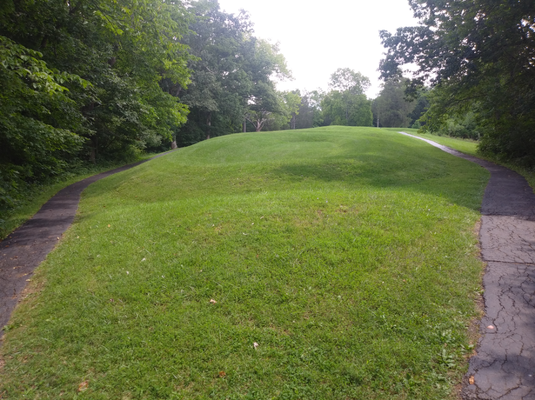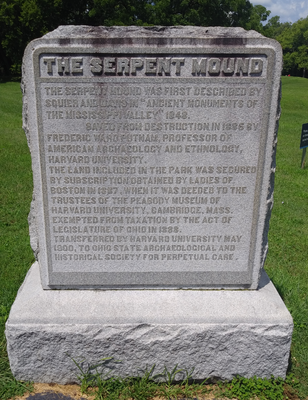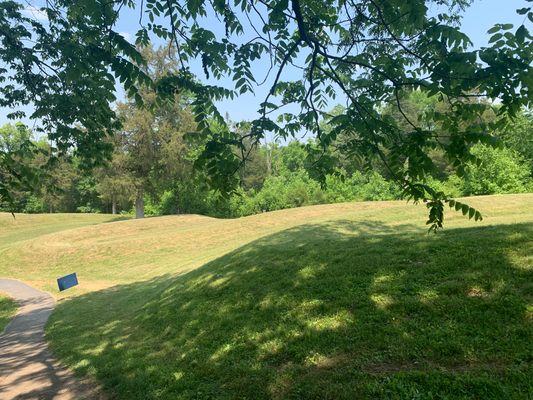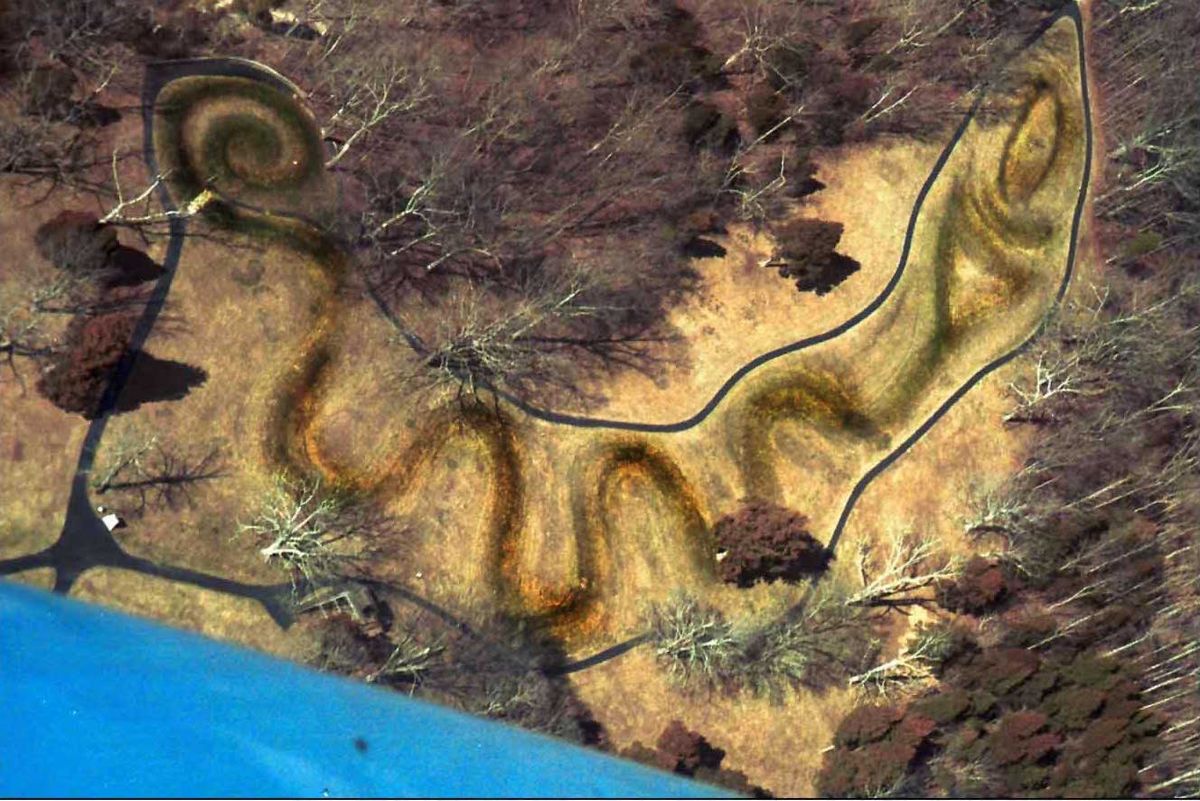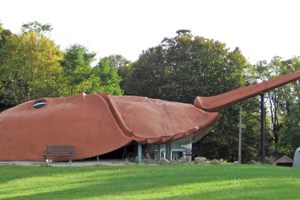About
The “mound builders” of early North America lived throughout what are now the Ohio Valley and Mississippi regions. The earliest group was probably the Adena people, who flourished from 1000 B.C. to 200 B.C. They built mounds throughout North America, from Wisconsin to Mississippi.
The Great Serpent Mound—a 1,330-foot-long, three-foot-high prehistoric effigy mound in southern Ohio—is one of the few surviving relics from the mound builders. The earliest records say it depicts a serpent swallowing an egg, though another interesting theory suggests that the snake is swallowing the moon. In 1909, local German Baptist minister Landon West proposed another possibility: The serpent, he said, is writhing in its death throes as punishment for tempting Adam and Eve, in what West believed was the original Garden of Eden.
It is unclear who built the Great Serpent Mound. Though the Adena people built structures like it, as well as burial grounds near the mound, charcoal from the mound has been dated to later in history, around 1000. So the mound may have been built by the Fort Ancient peoples, who lived in the Ohio Valley from 1000 to 1550.
The effigy is located within the Serpent Mound State Memorial and has been designated a National Historic Landmark. In 2023, it was designated a UNESCO World Heritage Site as part of the Hopewell Ceremonial Earthworks. A nonprofit organization called Arc of Appalachia maintains a museum near the mound.
Related Tags
Know Before You Go
You can find the museum's hours here.
Community Contributors
Published
September 7, 2009



